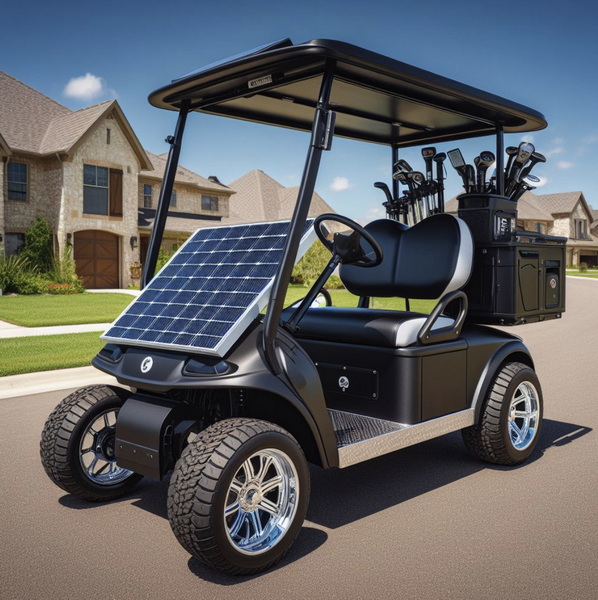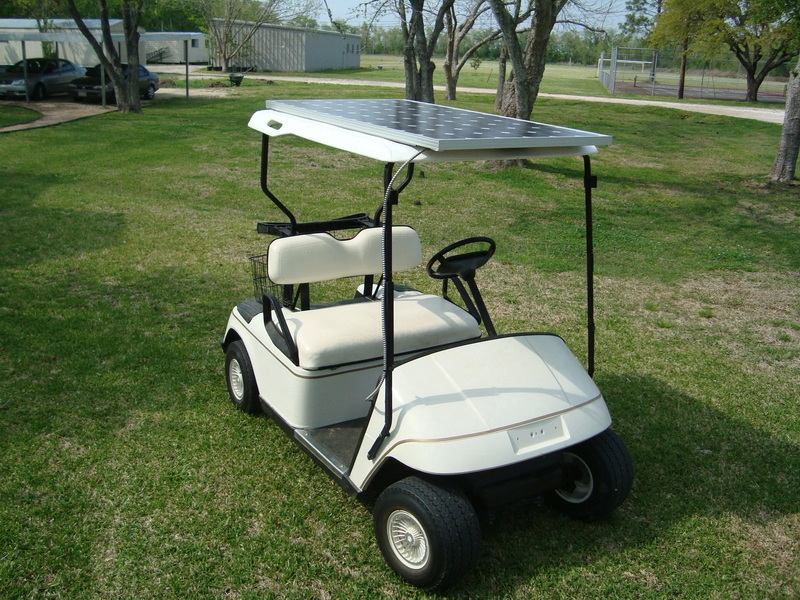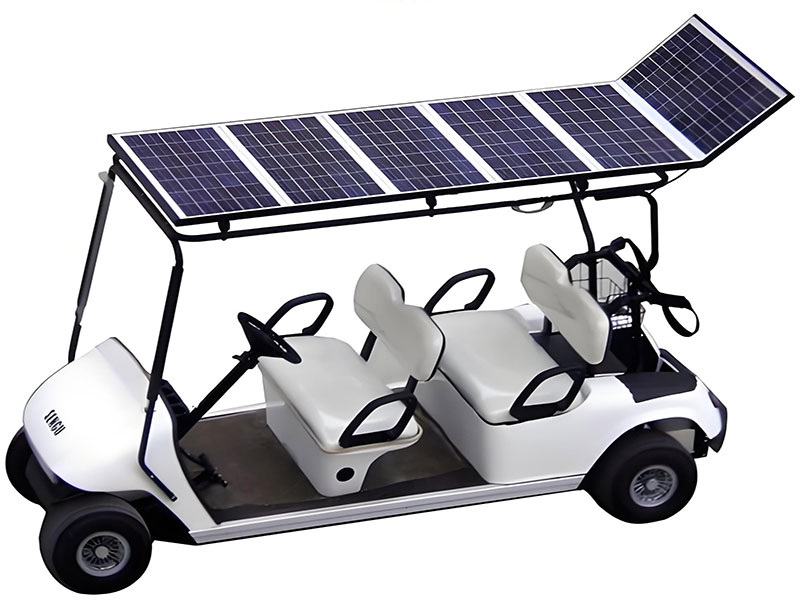Content Menu
● Understanding Electric Golf Carts
>> Benefits of Electric Golf Carts
>> Drawbacks of Electric Golf Carts
● Exploring Solar-Powered Golf Carts
>> Benefits of Solar-Powered Golf Carts
>> Drawbacks of Solar-Powered Golf Carts
● Side-by-Side Comparison
● Factors to Consider When Choosing
● Conclusion
● FAQ
>> 1. What is the lifespan of a solar panel on a golf cart?
>> 2. How much does it cost to convert an electric golf cart to solar power?
>> 3. Can solar panels fully charge a golf cart battery?
>> 4. Are there any tax incentives or rebates for purchasing solar-powered golf carts?
>> 5. How do solar-powered golf carts perform on cloudy days?
The golf cart industry is experiencing a significant shift towards electric-powered models, driven by technological advancements and increased environmental awareness. As golf courses and individual users seek more sustainable and cost-effective transportation options, electric and solar-powered golf carts have emerged as viable alternatives to traditional gasoline-powered carts. This article explores the differences, benefits, and considerations of electric versus solar-powered golf carts, providing a comprehensive comparison to help you make an informed decision.
Understanding Electric Golf Carts
Electric golf carts have become increasingly popular due to their eco-friendliness, lower operating costs, and quiet operation. Unlike gasoline-powered carts, electric models run on rechargeable batteries, eliminating the need for fossil fuels and reducing harmful emissions.

Benefits of Electric Golf Carts
- Reduced Emissions: Electric golf carts produce zero tailpipe emissions, contributing to cleaner air quality and reducing greenhouse gas emissions. This makes them a more environmentally friendly option compared to gas-powered carts. The elimination of harmful gases not only benefits the immediate environment but also contributes to global efforts in combating climate change.
- Energy Efficiency: Electric motors convert a higher percentage of energy from the battery into usable power, resulting in less wasted energy and lower overall energy consumption. Electric motors convert 80 to 90 percent of their input energy to kinetic energy, while internal combustion engines convert only 16 to 37 percent. This efficiency translates to more miles per charge and reduced energy costs.
- Lower Operating Costs: Electricity costs are generally lower than gasoline costs, making electric golf carts cheaper to operate over time. Electric carts have 85 percent lower fuel costs compared to gas carts. This cost-effectiveness is particularly appealing for golf courses and fleet operators looking to minimize expenses.
- Quiet Operation: Electric golf carts operate much quieter than gas-powered models, providing a more peaceful and enjoyable experience on the golf course and minimizing noise pollution in residential areas. The reduced noise enhances the overall experience for both golfers and residents, creating a more serene environment.
- Less Maintenance: Electric golf carts typically require less maintenance than gas-powered carts due to fewer moving parts in the electric motor. There is no need for oil changes, spark plug replacements, or fueling up. The simplified maintenance routine saves time and money, reducing the overall cost of ownership.
Drawbacks of Electric Golf Carts
- Battery Life and Charging Times: Electric golf carts require regular charging, which can take several hours to achieve a full charge. Depending on usage frequency and terrain, charging may need to occur regularly. This can be inconvenient for users who require continuous operation without downtime.
- Battery Replacement Costs: Battery replacements may be necessary over time, leading to maintenance-related costs. The main upkeep task is regularly maintaining the battery or replacing a damaged one, which happens around every eight to ten years. The cost of replacement batteries can be a significant expense, especially for those operating large fleets of electric carts.
- Power Limitations: Electric golf carts might sometimes lack power for long distances or hilly courses. The performance of electric carts can be affected by factors such as battery age, terrain, and the number of passengers, potentially limiting their usability in certain situations.
Exploring Solar-Powered Golf Carts
Solar-powered golf carts utilize photovoltaic panels to generate power for operation. These panels capture sunlight and convert it into electricity, which is then stored in batteries to run the cart. Solar-assisted golf carts recharge their batteries through a combination of grid-electricity and solar energy from panels mounted on the roof. The integration of solar panels represents a significant advancement in sustainable transportation within the golf cart industry.
Benefits of Solar-Powered Golf Carts
- Renewable Energy Source: Solar-powered golf carts harness solar energy, a renewable and sustainable resource, reducing reliance on non-renewable energy sources and lowering carbon emissions. By utilizing the sun's energy, these carts contribute to a cleaner and more sustainable environment.
- Extended Driving Range: Solar systems can significantly extend the vehicle's driving range by harnessing sunlight. Solar panels may allow up to 10% more driving time before needing to recharge/refuel. The increased range provides greater flexibility and convenience, allowing users to travel farther without worrying about running out of power.
- Prolonged Battery Life: Solar charging contributes to preserving the battery, ensuring a longer battery lifespan. Solar power may also extend your golf cart's battery life, making solar panels a truly cost-efficient option. This extended lifespan reduces the frequency of battery replacements, saving money and minimizing environmental impact.
- Reduced Electricity Bills: By utilizing free solar energy to charge the vehicle, solar-powered golf carts can slash energy costs. Once the initial investment is covered, the operating cost of a solar-powered golf cart is minimal. The long-term cost savings make solar-powered carts an attractive option for budget-conscious users.
- Environmental Friendliness: Solar power is a greener source of electricity that promotes the concept of “clean energy". Solar-powered golf carts reduce reliance on fossil fuels and the electricity generated from non-renewable sources, contributing to lower carbon emissions. This makes them a leading choice for environmentally conscious individuals and organizations.
Drawbacks of Solar-Powered Golf Carts
- Weather Dependency: Solar panels rely on sunlight to generate electricity, making them less effective in cloudy or rainy conditions. Solar paneled carts are better used in sunny conditions, and may not work optimally in habitually rainy climates. This limitation can impact the reliability and performance of solar-powered carts in certain regions.
- Higher Initial Cost: Solar-powered golf carts typically have a higher upfront cost due to the installation of solar panels and related equipment. The additional investment can be a barrier for some potential buyers, despite the long-term cost savings.
- Panel Efficiency: The actual energy savings from solar panels may be less than manufacturer claims, with some studies showing a lower contribution to electricity consumption than expected. The efficiency of solar panels can vary depending on factors such as panel quality, installation angle, and environmental conditions, affecting the overall energy savings.
- Maintenance: Solar panels require periodic cleaning and maintenance to ensure optimal performance, adding to the overall cost of ownership. Dust, dirt, and debris can accumulate on the panels, reducing their efficiency and requiring regular cleaning to maintain optimal performance.

Side-by-Side Comparison
To provide a clearer understanding, here's a comparison table highlighting the key differences between electric and solar-powered golf carts:
| Feature | Electric Golf Carts | Solar-Powered Golf Carts |
| Energy Source | Grid electricity | Sunlight (with grid electricity as a backup) |
| Emissions | Zero tailpipe emissions | Zero emissions during operation |
| Operating Costs | Lower than gas-powered carts, but dependent on electricity prices | Minimal after initial investment, as sunlight is free |
| Maintenance | Less than gas-powered carts, primarily battery maintenance | Battery maintenance plus periodic solar panel cleaning |
| Environmental Impact | Reduces reliance on fossil fuels compared to gas carts | Maximizes renewable energy use, further reducing carbon footprint |
| Initial Cost | Generally lower than solar-powered carts | Higher due to solar panel installation |
| Range | Dependent on battery capacity and usage | Potentially extended range with solar charging, but weather-dependent |
| Noise | Quiet operation | Quiet operation |
| Performance | Excellent performance, easy to start and accelerate | High-level performance; may outperform gas or electric carts, with up to 5 miles more travel range and up to 10% more driving time |
| Versatility | Easy to operate, perfect for the golf course's terrain | Easy to operate, perfect for the golf course's terrain |
Factors to Consider When Choosing
- Environmental Goals: If reducing your carbon footprint is a top priority, solar-powered golf carts offer a more sustainable solution. Solar-powered carts are at the forefront of eco-friendly transportation options.
- Budget: Consider both the initial investment and long-term operating costs. While solar carts have higher upfront costs, they can save money on electricity bills over time. A comprehensive budget analysis will reveal the most economical choice.
- Usage: Evaluate how often and where you will be using the golf cart. If you live in an area with abundant sunshine, solar power may be a more viable option. Consistent sunlight is essential for maximizing the benefits of solar-powered carts.
- Maintenance Capabilities: Assess your ability to maintain both the battery and solar panels. Regular maintenance is essential for optimal performance and longevity. Proper maintenance will ensure the longevity and efficiency of your golf cart.
- Terrain: If the golf course or area of use has steep hills or challenging terrain, consider the power capabilities of each option. Electric carts may require higher voltage batteries for optimal performance on hills.
- Aesthetics: Some users may prefer the look of one type of cart over the other. Consider the aesthetic appeal when making your decision.
- Resale Value: Research the resale value of both electric and solar-powered golf carts. This can be an important factor if you plan to upgrade or sell your cart in the future.
Conclusion
Both electric and solar-powered golf carts offer significant advantages over traditional gas-powered models, including reduced emissions, lower operating costs, and quieter operation. Electric golf carts provide a reliable and cost-effective option for those seeking an eco-friendly alternative, while solar-powered golf carts maximize renewable energy use and can further reduce environmental impact.
Ultimately, the choice between electric and solar-powered golf carts depends on individual needs, priorities, and circumstances. By carefully considering the factors outlined in this article, you can make an informed decision that aligns with your environmental goals and budget. Consider your usage habits, budget constraints, and environmental goals to make the most informed decision.

FAQ
1. What is the lifespan of a solar panel on a golf cart?
The lifespan of solar panels on golf carts typically ranges from 25 to 30 years, but their efficiency may decrease slightly over time. Regular maintenance and cleaning can help prolong their lifespan.
2. How much does it cost to convert an electric golf cart to solar power?
The cost to convert an electric golf cart to solar power can vary depending on the size and efficiency of the solar panels, as well as the complexity of the installation. It's best to get a customized quote from a solar panel installation company.
3. Can solar panels fully charge a golf cart battery?
In select areas and under specific conditions, the SolarDrive system can fully meet or exceed your power demands, while in others, it may provide a partial solution. The ability of solar panels to fully charge a golf cart battery depends on factors such as sunlight availability, panel size, and battery capacity. In optimal conditions, solar panels can provide a significant charge, but supplemental grid charging may still be necessary.
4. Are there any tax incentives or rebates for purchasing solar-powered golf carts?
Tax incentives and rebates for solar-powered golf carts vary by location and may be subject to change. Consult with your local government or a tax professional to determine if any incentives are available in your area.
5. How do solar-powered golf carts perform on cloudy days?
Solar-powered golf carts generate less electricity on cloudy days compared to sunny days. The panels will still produce some energy, but the charging process will be slower. In such cases, supplemental charging from the grid may be required to ensure optimal performance.




















































